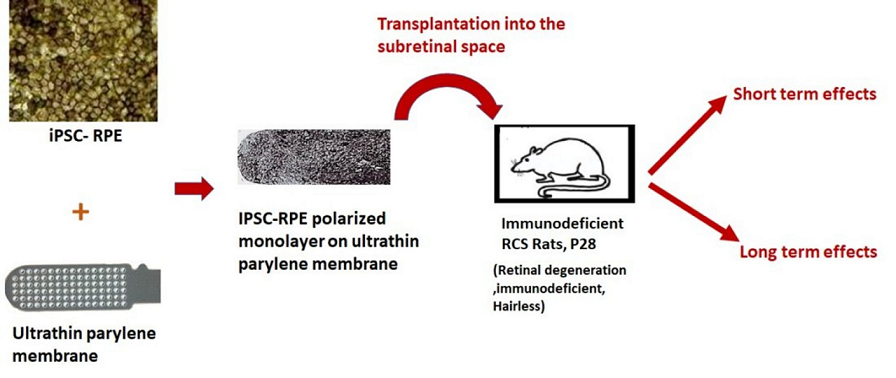Retinal pigment epithelium (RPE) replacement therapy is evolving as a feasible approach to treat age-related macular degeneration (AMD). In majority of the preclinical studies, RPE cells are transplanted as cell suspension into immunosuppressed animal eyes and transplant effects were monitored only short-term. We investigated long-term effects of human iPSC derived RPE transplants in immunodeficient Royal College of Surgeons (RCS) rat model, in which RPE dysfunction lead to photoreceptor degeneration. iPSC-RPE cultured as polarized monolayer on nanoengineered ultrathin parylene C scaffold was transplanted into the subretinal space of 28-day old immunodeficient RCS rat pups and evaluated after 1, 4 and 11 months. Assessment at early time points showed good iPSC-RPE survival. The transplants remained as a monolayer, expressed RPE specific markers, performed phagocytic function and contributed to vision preservation. At 11-month post-implantation, RPE survival was observed only in 50% of the eyes that were concomitant with vision preservation. Loss of RPE monolayer characteristics at the 11month time point was associated with peri-membrane fibrosis, immune reaction through activation of macrophages (CD 68 expression) and transition of cell fate (expression of mesenchymal markers). The overall study outcome supports the therapeutic potential of RPE grafts despite the loss of some transplant benefits during long-term observations.

